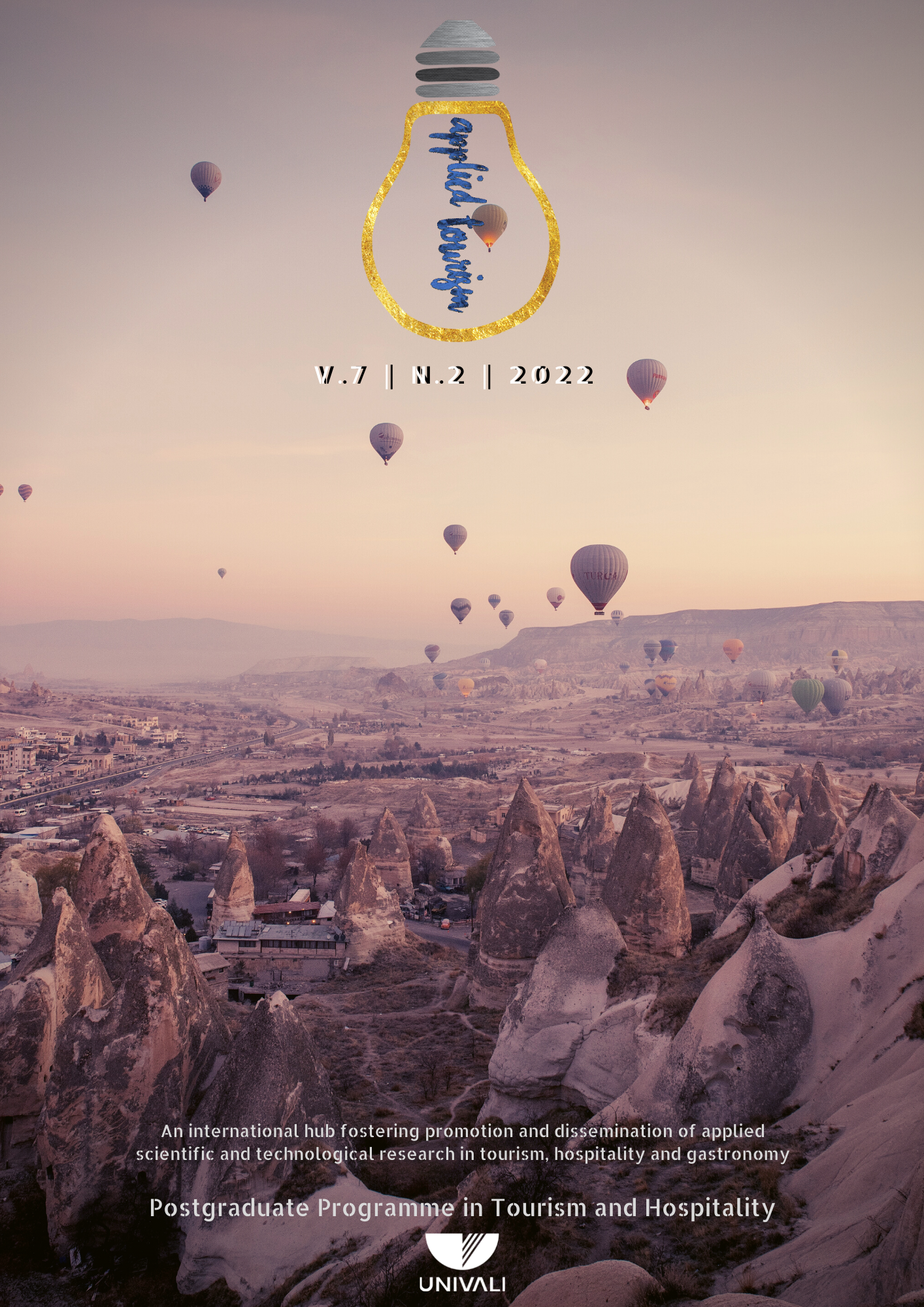Map of brazilian tourism: A study on the categorization of tourist regions in Rio Grande do Sul, Brazil
DOI:
https://doi.org/10.14210/at.v7n2.p43-53Abstract
This study analyzes the Categorization of Tourist Municipalities in the Rio Grande do Sul, and discusses the process of regionalization of tourism in the State and how tourism has impacted the development of the localities of Rio Grande do Sul that are part of the Brazilian Tourism Map, in light of the performance of their respective tourism economies. For this, an exploratory and descriptive study was carried out, based on secondary data available on the Mapa do Turismo 2019-2021 Portal of the Brazilian Ministry of Tourism. As a result, the categorization of tourist municipalities was created from the Tourism Regionalization Program, dividing the State of Rio Grande do Sul into twenty-seven tourist regions. The results show that in addition to the capital Porto Alegre, the Região das Hortênsias is the most important tourist destination in the state; it is the region with the most abundant offer of accommodation facilities, the one that generates more jobs in the hotel industry, and the one that collects the most taxes in the sector. Also of note are the Costa Doce, the Litoral Norte Gaúcho and the Região da Fronteira.
Downloads
Published
Issue
Section
License

This work is licensed under a Creative Commons Attribution-ShareAlike 4.0 International License.
In this term of responsibility I (we) certify the participation in the drafting of the attached article, thereby making public my (our) responsibility for its content. I (we) declare not omitting any connections or financing agreements between I (we) and entities and / or institutions that may have an interest in the publication of this article. I (we) certify that the article is original and that the work, in whole or in part, or any other work with content substantially similar to my (our) authorship, in any other format (printed or electronic), was not sent to another journal and will not be sent while is being considered by the Applied Tourism. In this consent form, the authors give permission to the journal, in the case of approval by the Editorial Board, for the publication of the attached article in hard copy and/or electronic form, in a regular edition of the journal.










